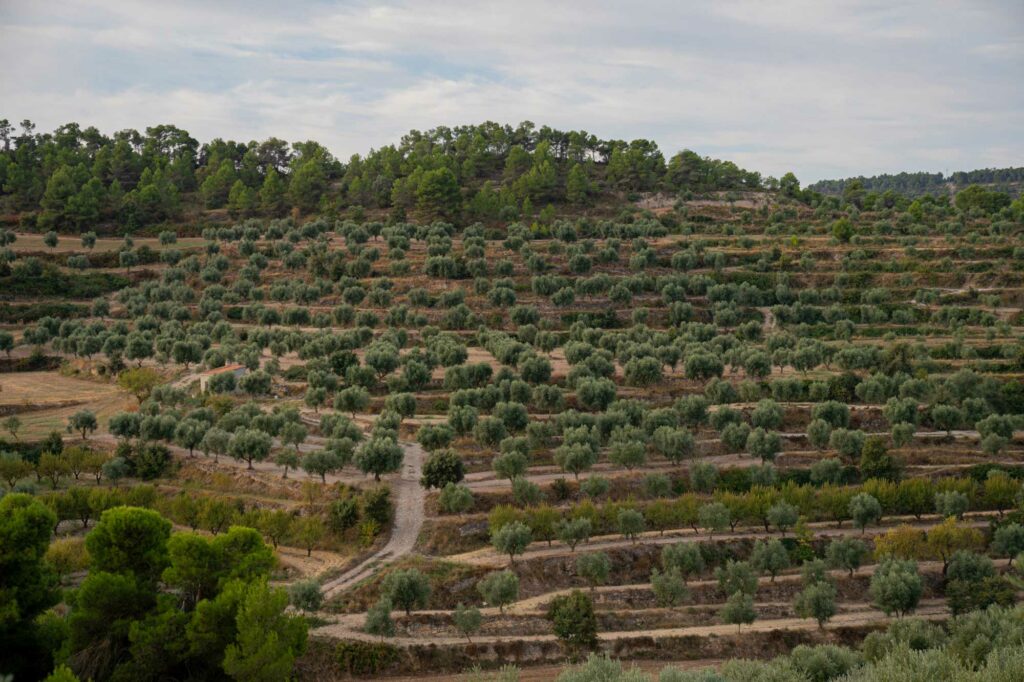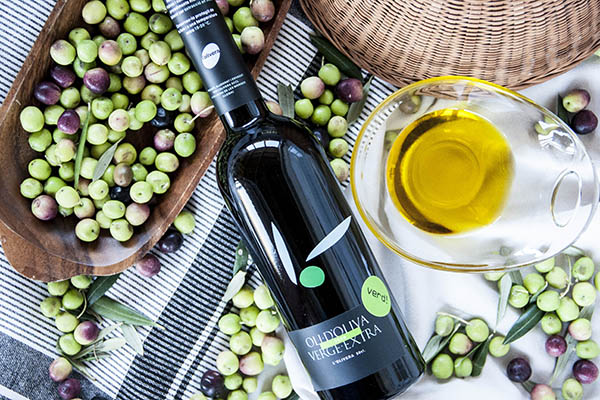Around November, with the start of the olive harvest, comes the first oil of the year, known as oli verd. But what is oli verd? And what about oli del raig? These are the questions we are always asked around that time. Allow us to explain.
Oli verd is the juice of the first olives, harvested during the early weeks of the season when they are still green. That is where the sensory properties of this greenness come from: the fresh scents of cut grass, almond, artichoke and tomato plant. Intense, with markedly bitter and spicy notes, these wild flavours recall the start of the harvest.
Because it is freshly made, oli verd comes in a cloudy or unfiltered format to fully harness the expression of these early olives. This, together with tradition and the excitement around consuming the oil “as it flows from the mill” led to the popularity of the term “del raig”, ‘raig’ meaning ‘flow’ in Catalan. Strictly speaking, “del raig” would mean as it flows once made, regardless of whether the olives are green or ripe. But the fact that it is usually made from green olives means “del raig” has been associated with a sense of the greenness of the olives and the oil, and therefore oli verd.
A mainstay of the Mediterranean diet
Oli verd is characterised by an aromatic intensity and the bitter, spicy taste it gets from the high polyphenol content that boosts its antioxidant properties above other oils made from ripe olives.
Indeed, following a rigorous five-year process, the European Union, via the European Food Safety Authority (EFSA), included extra virgin olive oil on the list of healthy foods rich in oleic acid, polyphenols and vitamin E.
Extra virgin olive oil is also of utmost importance in the Mediterranean diet, recognised worldwide and UNESCO listed as Intangible Cultural Heritage.

